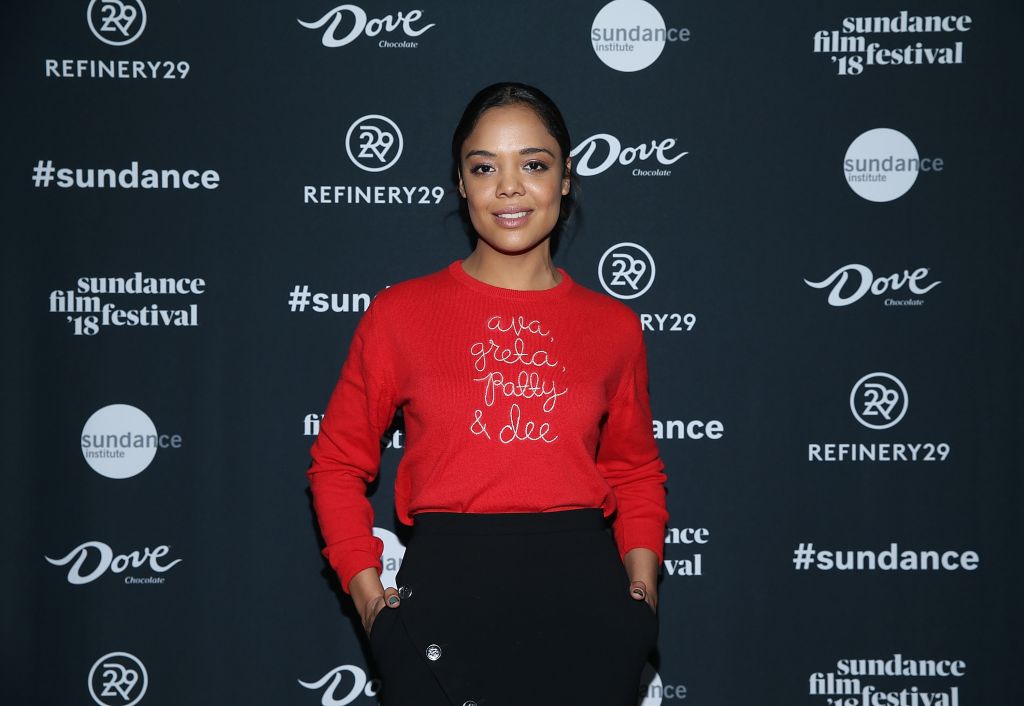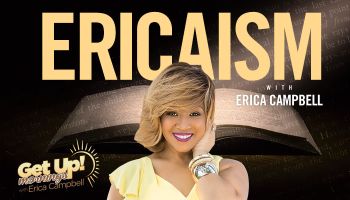While many of us were glued to the stylish red carpet looks from this year’s SAG awards, a different moment was simultaneously happening off to the side– actress Gina Rodriguez was calling out Hollywood for their lack of Latinx representation in film.
“Yay, Sony, for putting a Latino in the lead, because barely people do that,” Rodriguez told E! News correspondent Nina Parker on her newest movie coming out in February. “I mean, we do make [up] 55 million plus in the country — no big deal — you should throw us in a movie or two, it would make sense. We do buy 1 in every 4 tickets every single weekend and make sure that your movies do well. So it would do you a service. And not only service, it would be — I don’t know — integrity. So thank you, Paramount and Sony, because you two are driving the game, you’re doing it. You’re opening the doors.”
RELATED: #TimesUp: There’s A Silent Protest Happening At The Golden Globes & Mary J Blige Is In On It
As I sat and watched the interaction, I reflected on how representation matters in media and has the tools to validate one’s very existence. As an Afro-Latina woman, I rarely saw others such as myself in film or media, oftentimes having to choose between two dichotomies and seemingly two different worlds (are you watching telenovelas or are you watching BET?). Women like Celia Cruz led what felt like a revolution to show people that one could be all gradients of Black, and that being from a country like Cuba, or the Dominican Republic, Puerto Rico, or Panama didn’t make one any less of either race or ethnicity. Not seeing someone who looked like me made me question what I was, not understanding rich heritages and cultures that were fused uniquely through various exchanges of the African Diaspora. Even simple nuances such as seeing a brown woman speaking Spanish was a rarity on the screen. Why couldn’t someone like soul food and platanos? Why wasn’t there a blend of AAVE and Dominican slang? And why did every “Latina” woman in film leads all look the same; ironically, none looking like me?

Source: Phillip Faraone / Getty
Nowadays, the increase of Afro-Latinism is growing in media and in Hollywood. A-list actress Tessa Thompson is Afro-Panamanian, Gina Rodriguez and Carmelo Anthony are Afro-Puerto Rican, and Zoe Saldana is Dominican-Puerto Rican. Miguel, Kelis, Tatyana Ali, Christina Milian, and Soledad O’Brien all have Afro-Latin roots and have worked to increase the conversation happening in the Black community. However, the amount of representation we’re seeing in media, especially with a woman who is a dark-skinned woman speaking at the helm, is still pretty much nonexistent. Mostly because most people still only have a narrow-minded vision of what a “Latinx” or a “Black” person looks like.
<p><a href=”https://giphy.com/gifs/happy-post-dark-bfcaATeF8zJRK”>via GIPHY</a></p>
Take, for example, Amara La Negra. For many Latinx and Afro-Latinas like myself, Amara is not new to the scene when it comes to speaking on her Black and Latina culture. When I see her, I think of countless family and friends who share her rich deep chocolate skin, kinky coils, and full hips with Chicana flare. And yet, for some reason, there is a cultural issue with believing that we can be Black and Latina. The two do not cancel out each other, and countless people of the African Diaspora have other cultural roots in various parts of the world. The sad thing is when others, both within and outside of your race, don’t validate your existence mostly due to ignorance. In an interview with The Breakfast Club, Amara was challenged by DJ Envy and Charlamagne on her ideas of colorism being “in her mind” and that her discussions on racism weren’t justifiable because of success stories like Cardi B. It angered me to see people try to refute colorism in the Latinx community simply off the idea that everyone is equally represented when one or two make it. It left me to wonder if they had ever seen a dark-skinned, afro-textured Latina woman before Amara; arguably, if their lack of understanding her saying girls like her needed to be represented was based off the fact they didn’t even know girls like her existed. How would they have responded differently if seeing a woman like her wasn’t such an anomaly but an everyday occurrence? If women like her were embraced in Hollywood and were the leads in shows, movies, and chart-topping music? A fight for more Latinx representation should not only be a priority within the Latinx community; all marginalized groups should band together because when even one group is oppressed, it perpetuates Hollywood’s notion of tokenism and simply hitting a diversity quota. And while you may not think it affects you directly, the sentiment lingers indirectly to affect other factors of culture. It is vital to show the range that people can come in instead of believing one person can properly represent an entire race or culture.
RELATED: Amara La Negra Schools Charlamagne Tha God And DJ Envy On Colorism [VIDEO]
If we’re saying and truly standing behind #TimesUp, we’re saying times up on Hollywood’s biases and agenda. Times up on tokenism and selective representation. Times up on colorism and racial discrimination. Everyone deserves to be seen and heard and have their existence validated–we won’t stop fighting until we do. If you’re interested in learning about Blackness in Latin America, you can check out this PBS series that really does the discussion justice.
DON’T MISS:
LHHMIA Recap: Young Hollywood Offers Seemingly Genuine Apology For His Colorist Remarks
Kevin Spacey Accused Of Racism, Saying The N-Word On ‘House Of Cards’ Set
You Won’t Believe What Racist Name This Italian Nail Polish Company Gave Their Darkest Color!
Gina Rodriguez’s Call for Latina Leads Is Important to More Than Just The Latinx Community was originally published on hellobeautiful.com












